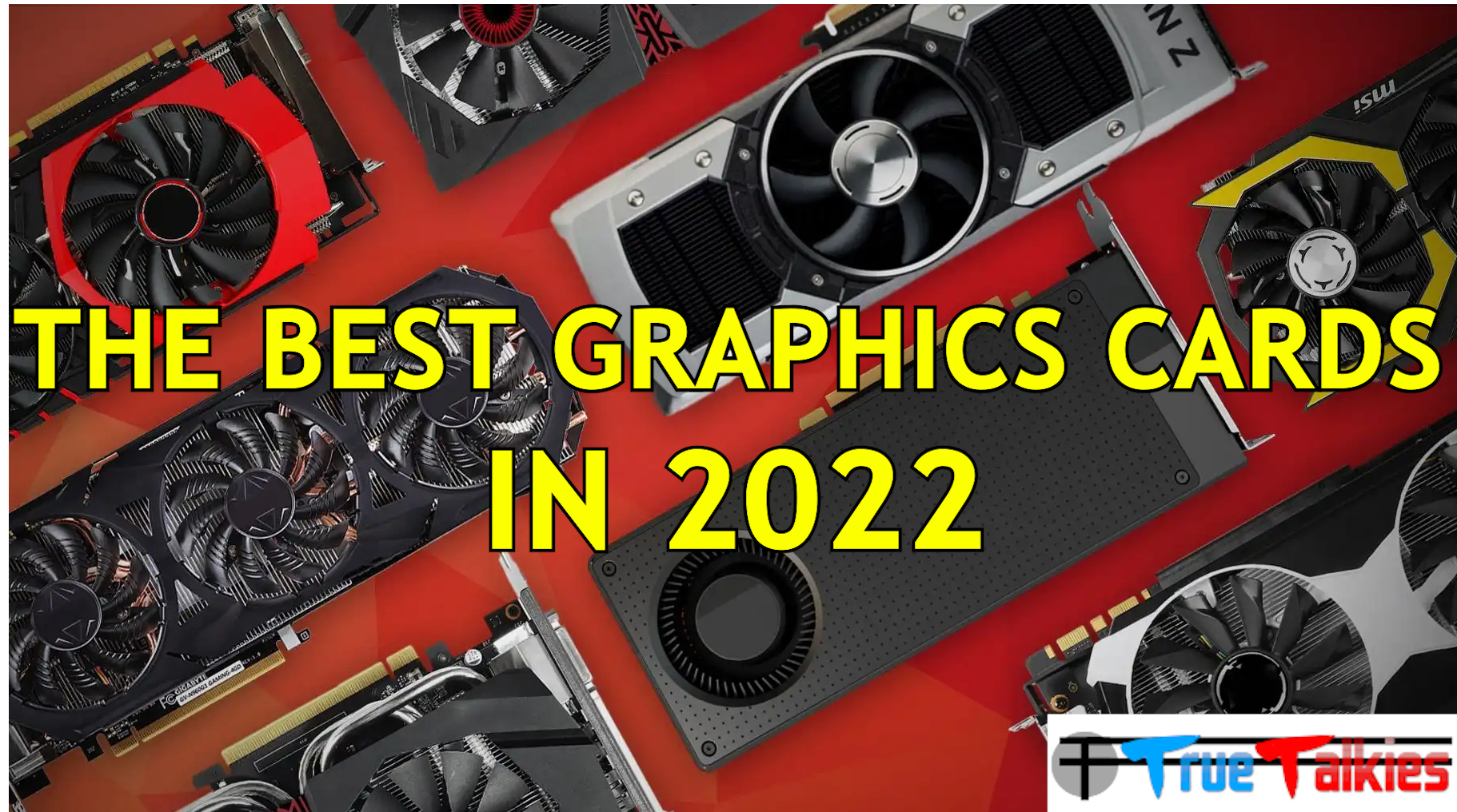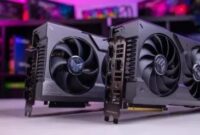A graphics card is one of the important components of a gaming PC, if not the most. But just like most PC components, there’s no single GPU that works for everyone. While some users may want the absolute best GPU for the ultimate gaming experience on PC, others may want something that offers the best value, albeit less powerful. Many are even looking for the best budget graphics cards for a casual 1080p gaming experience. Well in this article, we’re going to take a look at some of the best graphics cards for gaming you can buy in 2022. We’ll try to add as many options as we possibly can in different price ranges, so there’s something for everyone.
We’re totally aware of the current situation in the GPU market and just how difficult it is to buy any graphics cards — let alone the top-tier ones — without paying an absurd amount of money. We’re not out of the woods yet but it looks like the prices of both Nvidia and AMD GPU may finally be coming down. We’ve already seen some stocks pop up on retail, allowing more people to finally buy a graphics card in 2022. The situation is expected to get better over the next few months. And when that happens, we think these are the best graphics cards for gaming you should consider buying.
Best overall graphics card for gaming in 2022:-
1. Nvidia GeForce RTX 3080

While the GeForce RTX 3080 may not be the most powerful graphics card on the market right now, it definitely is the cream of the crop. The RTX 3080 is an excellent GPU in the RTX 30-series lineup that’s perfectly capable of handling 4K gaming at 60FPS and above. The RTX 3080 has also made it to a lot of our other collection articles, including the best graphics cards and the best Nvidia graphics cards, so it’s hardly a surprise that we’ve added this as our top pick for gaming.
The Nvidia GeForce RTX 3080 sports the new and improved Ampere architecture. We’re looking at an overall performance improvement of over 30-percent when compared with its previous-gen counterpart, the RTX 2080 Ti. And the best thing about that? The RTX 3080 costs as much as $500 less, so you’re essentially getting more performance for less price. It even matches the general performance of the RTX 3090 without demanding as much money.
Thanks to Ampere, we’re also looking at some other great Nvidia features including DLSS. DLSS 2.0 also works better thanks to the improved tensor cores on the RTX 3080. The RTX 3080 also offers impressive ray-tracing performance compared to the competition. This is mostly due to the improved DLSS performance. Nvidia has worked on DLSS a lot to improve the upscaling. The games look much better now and they offer a massive performance boost, especially when you are working with high-resolutions and RT rendering. It’s safe to say that the Nvidia RTX 3080 handily beast the Radeon RX 6800 XT when it comes to RT performance. There’s still a lot of work that needs to be done from AMD’s side when it comes to RT and upscaling, so we think Nvidia is going to continue holding the top until that happens.
As for the specifications, the GeForce RTX 3080 packs 28.3 billion transistors along with 272 Tensor cores and 68 RT cores. We’re looking at a boost clock of 1,710MHz, which is slightly less than both the RTX 2080 Super FE and the RTX 2080 FE’s boost clock speeds of 1,815MHz and 1,800MHz, respectively. The Nvidia RTX 3080 also has 10GB VRAM with a 19GB/s speed. The RTX 3080 has a total bandwidth of 720GB/s, which is significantly higher than the other two GPUs mentioned above.
All things considered, we think the GeForce RTX 3080 is one of the best graphics cards you can buy for gaming right now. This may be a step below the RTX 3090 but we think this is the best GPU for most users out there. It offers a great 4K gaming experience with smooth gameplay even with demanding titles like Cyberpunk 2077. Just make sure you pair with one of the best CPUs and have a good 4K gaming monitor to get the best gaming experience. You can either buy the Founders’ Edition of the RTX 3080 from Nvidia or pick up one of the cards made by one of the many partner OEMs including ASUS, MSI, and more.
|
Features: |
|
Pros:
Cons:
|
2. AMD Radeon RX 6800 XT
It’s a tough call between it and the RTX 3080, but the latter pips AMD to the post with the final touches à la RTX. The RX 6800 XT is $50 cheaper, delivers high 4K performance and a hefty VRAM increase over the RTX 3080. However, it’s easy to argue that an extra $50 dropped on the RTX 3080 is money well spent: a small price to pay for greater 4K performance, much-improved ray tracing, and DLSS. All are available today and with two year’s worth of developer support in the bank. That said, AMD’s FidelityFX Super Resolution is gaining momentum among developers, and offers solid upscaling worth enabling in supported games.
Yet we’re still big fans of what AMD has managed to accomplish with the RX 6800 XT, a return to form for the Radeon Technology Group that injects some much-needed competition into the GPU market and offers a worthy red team alternative for any high-end gaming PC build.
3. Nvidia GeForce RTX 3060 Ti
While 17% less capable in core count, the RTX 3060 Ti makes up for it with some judicious GPU Boost frequencies. That partially explains why the RTX 3060 Ti can be within 17% to just single digits off the pace of the RTX 3070, despite operating at a silicon disadvantage. Not bad for a $399 card (if you can find it for that price).
If you haven’t already done the maths: At $399, the RTX 3060 Ti is 20% cheaper than the RTX 3070, so performance per dollar is on the up with the diminutive graphics card. That’s why we love it so; it’s a great GPU for the full stack of resolutions and has decent ray tracing capability to boot, courtesy of second-generation RT Cores.
If the RTX 3080 or RTX 3070 seem out of reach, the RTX 3060 Ti certainly makes for a decent stand-in. Perhaps most impressive of this graphics card is how it stacks up to the 20-series generation: It topples the RTX 2080 Super in nearly every test.
4. Nvidia GeForce RTX 3070
At $499, it’s still a significant sum by any means—we’re talking next-gen console equivalent pricing here—but it’s hardly an exorbitant sum when compared to PC gaming’s top graphics silicon today. In return, you’re gifted a 4K-capable graphics card that doesn’t require too much fiddling to reach playable, if not high, framerates. And it’ll absolutely smash it at 1440p, no question about that.
Its gaming performance credentials are undoubtedly impressive, but what makes the RTX 3070 our pick for the sensible PC gaming connoisseur is the entire Nvidia ecosystem underlying the RTX stack today. DLSS is a neat trick for improving performance, with only a nominal loss in clarity, and other features such as Broadcast and Reflex go a long way to sweetening the deal.
5. AMD Radeon RX 6900 XT
For that reason, it’s simply the better buy for any PC gamer without any ulterior motives of the pro-creator variety. But there’s a reason it’s not number one in our graphics card guide today, and that’s simply due to the fact it’s not that much better than an RTX 3080, and sometimes not at all. It’s another $300 on top of the RTX 3080’s price tag, and you’d hope for higher performance in both rasterized and ray tracing workloads. Yet, inevitably its ray-tracing acceleration lags behind the competition.
But the RX 6900 XT does come with assurances that the RTX 3080 can’t make, such as its 16GB of GDDR6 memory, which is a whole 6GB greater than the 10GB of (faster) GDDR6X memory on the green team card. With that in mind, for raw gaming alone, the RX 6900 XT is a cheaper alternative to the RTX 3090 is still a victim to its own extreme price tag.
6. Nvidia GeForce RTX 3080 Ti
With performance close to the RTX 3090 at 4K, the RTX 3080 Ti is as much a gaming graphics card as its progenitor. With a vast bounty of CUDA Cores and speedy GDDR6X memory, this card demolishes any game you can throw at it with relative ease. It’s also more than capable of real-time ray tracing, courtesy of 80 RT Cores.
The reason we don’t rate this card higher up in our list of the best graphics cards, however, is down to its price. Launching at $1,200, it’s only a stone’s throw away from the $1,499 RTX 3090. Massively inflated pricing, or lack of stock, notwithstanding.
 (Image credit: Zotac)
(Image credit: Zotac)
With a decent generation-on-generation improvement and plenty of speed at 1080p and 1440p, the RTX 3060 12GB is a graphics card easily argued for. It’s also nominally cheaper than the RTX 2060 was on launch day, though it’s not so easy to find it as a discrete number nowadays. That said, this card often crops up within pre-built gaming PCs(opens in new tab), and for a decent price all-inclusive too.

The RTX 3050 is a much smaller GPU than the RTX 3060 12GB, and like any good PC gamer we would recommend the larger chip. That said, if you can’t stretch your budget any further, the RTX 3050 will deliver GTX 1660 Ti performance with the benefit of DLSS.
There’s also support for ray tracing with the RTX 3050, though its weak-heart innards aren’t going to stand for much of that.
As the basis of a prebuilt gaming PC, the RTX 3050 is the better option of what’s out there on a tight budget. That said, you can find really good RTX 3060 12GB PC deals out there fairly regularly, and with a little patience you may be able to grab a much more capable graphics card.
Graphics card FAQ

How do I get a GPU in the the graphics card shortage?
We’ve had success with the app HotStock in the UK, and sites such as Stock Informer(opens in new tab) offer a similar service in the US, although we’ve not used this service to score stock personally.
Similarly, you can find plenty of free Discord servers with dedicated stock alert bots and eagle-eyed community members, such as the popular StockDrops server(opens in new tab).




